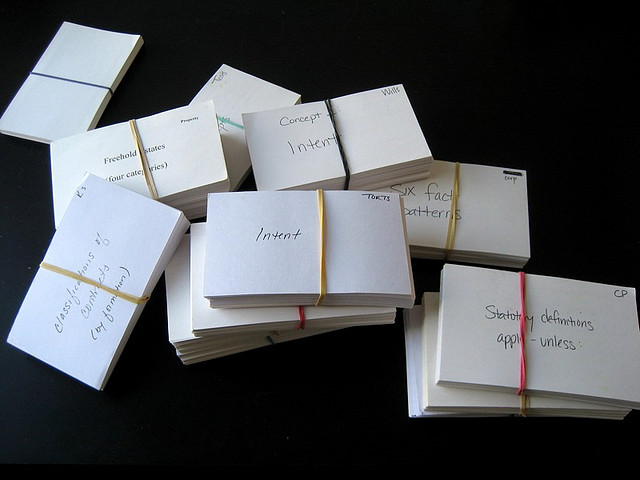Stop Cramming: Simple Steps to Retain All Your School Work

Photo Credit: HeatherMG
A few months ago, I wrote an article about getting through difficult material called Learn From the Outside In to Understand Practically Anything. If you haven’t checked that out yet, I suggest you do so, as it has strategies that are necessary before diving into this method. The most frequent question I received about that post was, “How do I retain the material I just learned?” I have two simple answers:
- Don’t Cram
- Use Spaced Retrieval
Note: Much of content in this post is adapted from the expert advice in Make it Stick I highly recommend it to learners in high school, college, and beyond.
Why Cramming Doesn’t Work
It’s unfortunate that the biggest study mistake happens to be the most popular among high school and college students. We’ve all done it: procrastinate all your reading until the night before the big exam. Some of us have even pulled all-nighters to brute force all those unconnected facts into our brain. The worst part of all this is that it works—for one test. What about the test next week? Or the cumulative final? The information crammed in one night leaves your memory bank just as quickly as it came in. This is because you’re solving a long-term problem with a short-term solution, i.e. storing the knowledge in your short-term memory. Effective learning means understanding a topic inside and out, so it can be recalled years down the road (not just tomorrow morning). What seems like a timesaving strategy today actually loses you precious hours when preparing for that inevitable final. Remember: you have to relearn all the material you’ll forget tomorrow, then rinse and repeat for every single test leading to the end. It’s a waste of time, energy, and there’s a better way to solve the retention crisis.
Why Spaced Retrieval is a Better Way to Study
Retrieval is the act of recalling information over and over until it makes its way into your long-term memory. This is not rereading. Rereading is a passive, inefficient method of retaining information, as the student is practically in sleep mode when doing so. Retrieval is writing down important informationthat you are likely to forget, and testing yourself constantly. It’s called “spaced” retrieval because research has shown that coming back to material after a day or two rest will keep it in your memory longer than doing it in one long study session (read: cramming).
Tools to Make Spaced Retrieval Easy and Effective
Low Tech: Index Cards This isn’t throwback Thursday everybody. I’m just here to remind you that this classic is still en vogue in many a study circle. Though I shouldn’t be telling you much about index cards that you don’t already know, there is one concept that seems to escape a lot of young memorizers: be specific! Write specific questions on the front of your card, so you know exactly what one-week-ago-you was talking about.
Good: The cell organelle that holds DNA is called…
Bad: Name all the organelles in a cell…
High Tech: Spaced Retrieval Software I’ve raved about Anki before and I don’t plan on stopping today. It’s free software that I recommend to all my students (and friends who love to learn). You create decks of virtual flashcards that Anki quizzes you on over specific time periods. It learns from you and then intelligently mixes the cards up so you’re only learning the material you’re not as comfortable with. The same rules apply here as they do for index cards: be specific! There is no wasting paper in this version, so I expect your decks to be packed to the brim with valuable information. With these tools in your arsenal and your newfound knowledge about spaced retrieval, no material should be outside the scope of your understanding. Nor should it fly out as soon as your teacher collects the test paper.





No comments